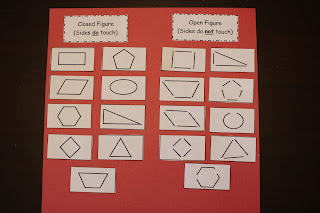Everyone loves a good coloring page, right? But how do you make that coloring time that
is oh so important fit into a rigorous, standards-based curriculum? You include math of course! Now, there are a ton of math coloring pages
out there, from 100 charts to addition facts to graphing plots. So what makes these special?
Because they are 120 chart mystery pictures! When I was in first grade, we loved the idea
of the mystery pictures on the 100s charts because of the great practice with
number recognition and place value skills.
Plus, our kids got some great fine motor practice as a bonus! However, we were following the Common Core
State Standards at the time, and the expectation for first grade was for
students to be familiar with numbers up to 120.
So rather than miss out on this great practice, or only partially meet
the standard using products that were already out there, I created these 120
chart mystery picture pages!

As you can see, there is a 120 chart mystery picture for
just about any occasion you could wish.
I have them available In a year long bundle that includes everything
from Halloween, Thanksgiving, and Christmas to Mardi Gras, St. Patrick’s Day,
Spring, and even Summer! There are
currently 13 in all. Students 2nd
grade and up could easily complete the year long 120 chart mystery picture set
independently as practice, review, or even an assessment.
If you’re teaching first grade and think that your students
may need a little more practice with number recognition before they dive in
independently, I do offer the 120 chart mystery pictures in 2 other bundled
sets: fall holidays and spring holidays.
Maybe you’re only working on that skill in the fall. Or maybe you want to hit it hard in the fall
and use the spring set to spiral, practice, or assess on an independent
level. Whatever works for you.
I actually still use these even though I’m in kindergarten
now. And you’re thinking, but how? And why?
Let me share!
Why?? Easy. First of all, some of them are just plain
ready for it. I always have at least one
small group of students that is ready for “first grade” math. So, why not expose them?! Second, all of my students can use the
coloring practice! ALL. OF THEM. And bonus, while they color they get more exposure
to numbers and how to recognize them.
BAM! Great plan! Third, I love, love, love their conversations
while they try to figure it out. It is
adorable. Fourth, like I have mentioned
before, any time I can bring in some art or social studies or speaking and
listening, I’m going to do it. Check,
check, and check because most of these pages give a nod to a holiday, or at
least a season.
As for the how, everyone’s favorite word:
differentiate. In first grade, I would
give this activity independently (for the most part). In kindergarten, we always do it small
group. That group that’s ready for it,
let them at it. I usually monitor fairly
closely, and stay close for questions, but it’s a great time to help another
group with their independent work if they need it.
Then there’s the group that’s just almost there. So I teach them how to match and mark the
numbers with each color.
After they’ve marked all of one color, or even all the
colors, they can go back and fill it in nice and neat. Notice though I said teach them. This is not something they’ll immediately
catch on to. But with good modeling and
guided practice, they are capable. I
promise. If most of your class is at
this point, you could even show them on a document camera if you have one.

And there will be that group that just needs some extra
help. That’s ok. It’s kindergarten. Some of our babies just aren’t ready to go to
120. But that doesn’t mean that we
should exclude them! So, a third way I
differentiate is by helping them mark the colors. This is a great opportunity still to discuss
and practice the numbers as you do it.
But if the class is going to color a 120 chart mystery picture turkey,
everyone should! I do this type of
scaffolding one color at a time. I grab
my own crayon or even colored pencil, and slash through all the boxes that need
that color. Then they go through and
shade those marked boxes all the way in.
And we move on to the next color once they’re finished. It sounds like a lot of work, but it really
goes super quick. You can even pre-prep
the first color before that group gets to you (during planning, or even while
that independent group is working). It’s
not as demanding as it sounds, I promise!

Once you’re finished, you have some great
artwork to display, and you can even hang a math standard by it too! If you’re looking for a way to include some
art and fine motor practice in your math block, or if you just need a math activity
to go along with your holiday activities, there is a 120 chart mystery picture
for you! And if you can’t find one that
you need, leave me a comment and maybe that will be the next 120 chart mystery
picture I add to the bundle!














